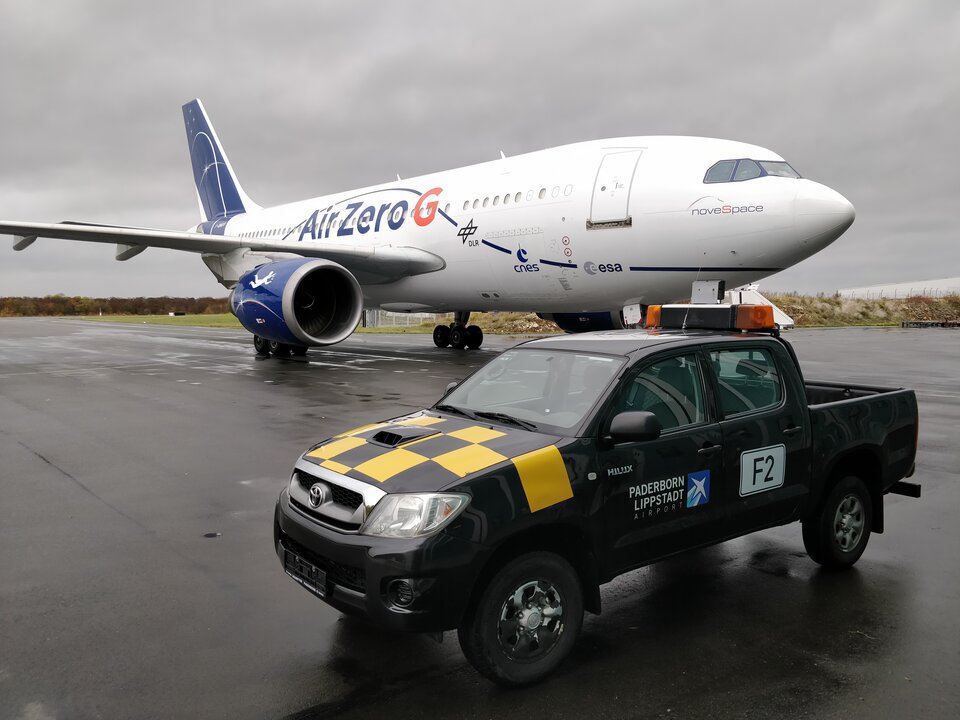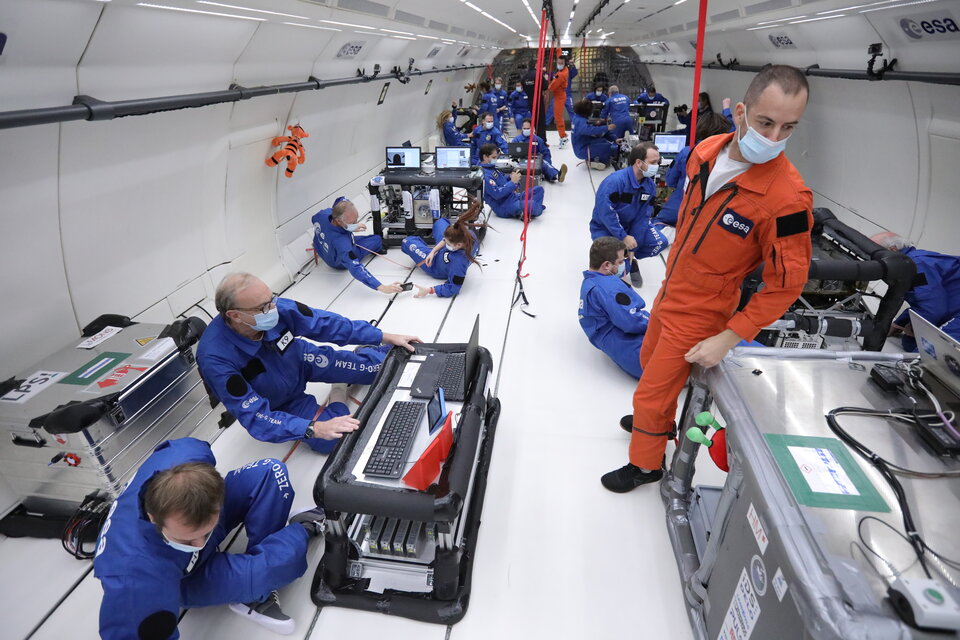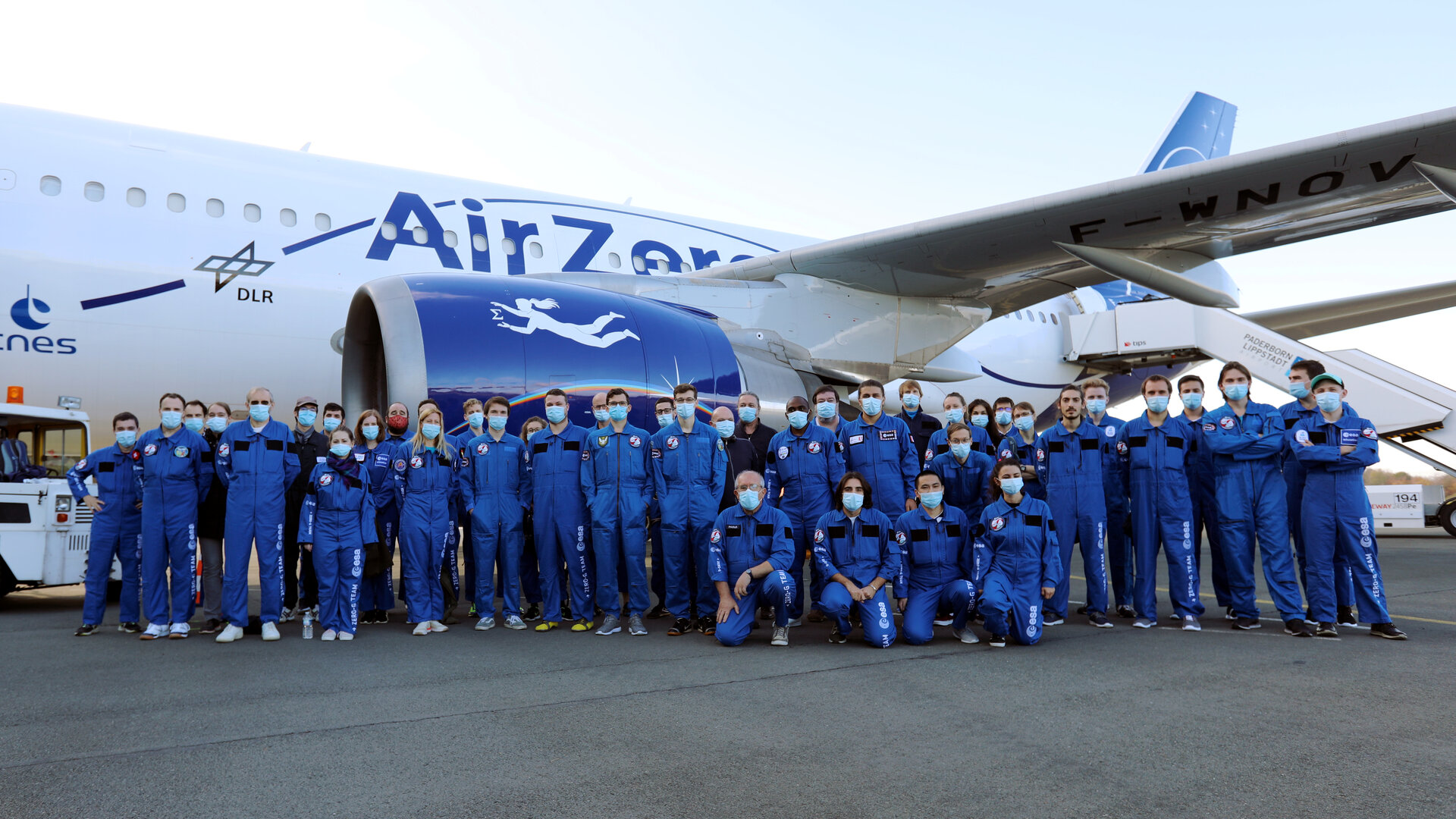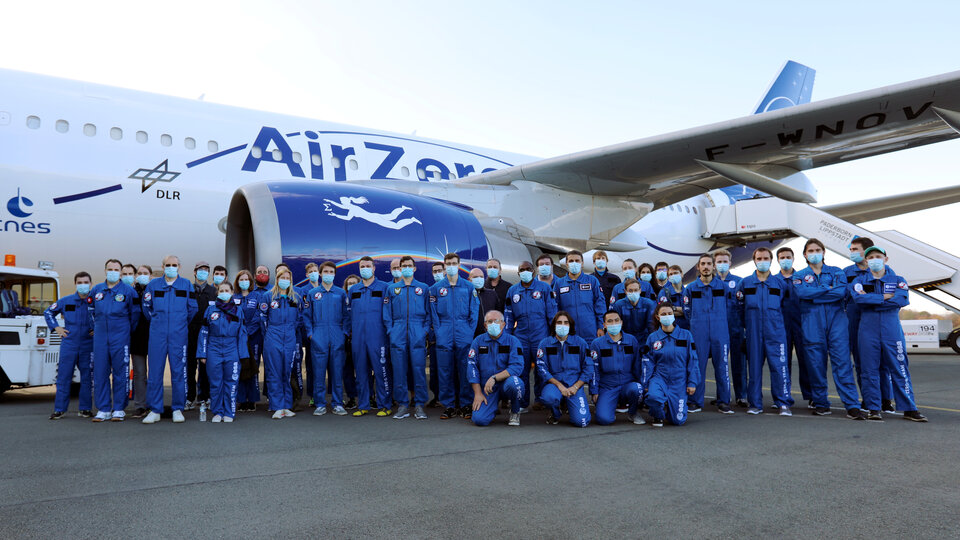Rollercoaster research landed, next flight: Moon and Mars
It was a difficult campaign to organise, but the scientific results are some of the best ever. Earlier this month, over 60 researchers ran 11 experiments in an Airbus aircraft with no less than three pilots. This was no ordinary flight: the A310 'Air Zero G' flew in repeated arcs 600 m up and down, providing ‘weightlessness’ in freefall conditions for all passengers and their experiments, 20 seconds at a time.

With flights prepared and operated by contractor Novespace, ESA runs regular parabolic campaigns to conduct scientific research and to test hardware for future space missions.
“Usually our ‘home base’ for parabolic flights is Merignac airport in Bordeaux, France,” says ESA’s Parabolic Flight coordinator Neil Melville, “but to minimise risk due to COVID-19 infection rates and maximise participation despite travel restrictions, we relocated to Padeborn-Lippstadt airport in Germany.

“Changing our plans and getting all of the equipment and personnel to the new location was a logistical challenge, especially at short notice, but with the great work of Novespace and the support of our new hosts we got it done.
“I would say it was probably the most scientifically successful campaign we've ever had, since all the experiments got near-perfect data from nearly all parabolas.”
As in all human spaceflight, safety is paramount and many measures were taken to ensure COVID-19 was kept at bay. All participants were tested before leaving high-risk areas, temperatures were checked regularly, strict social distancing was in place in the hangar where experiments were prepared, masks were obligatory at all times, only a limited number of experimenters were allowed on the aircraft, and the plane’s seating arrangement was changed to ensure social distancing.

The diverse experiments focused on how humans perceive motion without gravity as reference, how our brains manage to process information during weightlessness, new ways of extracting oxygen from lunar soil, techniques for better cooling and heat transfer in space, and zero-g 3D-printing.
“Some of these experiments are final checks before sending their hardware up on other platforms such as sounding rockets, some are helping us understand how astronauts cope with spaceflight, some are preparing further exploration of the Solar System,” explains Neil, “and others are delving deeper into fundamental physics to help us understand our Universe in more detail.”
Altering the parameters


Access the video

ESA has another campaign planned this year, consisting of three even more special flights, in which the participants will experience several different states of gravity. By carefully controlling lift, and therefore the steepness of the parabolas, the pilots of the Airbus A310 Air Zero G can provide any gravity level between 0g and 1g. For the 74th campaign in December, the crew will be focussing on Moon and Mars gravity.
Experiments on this new campaign will investigate how people react to stumbling in lunar gravity, how to extract oxygen and water on the Moon, and how to create water on Mars. This will allow the researchers to better prepare for future lunar and martian exploration. Some hardware has already been proven to work in space and on Earth, but these types of parabolic flights are the only way for engineers and researchers to ensure their equipment will work on other planets or on the Moon.



